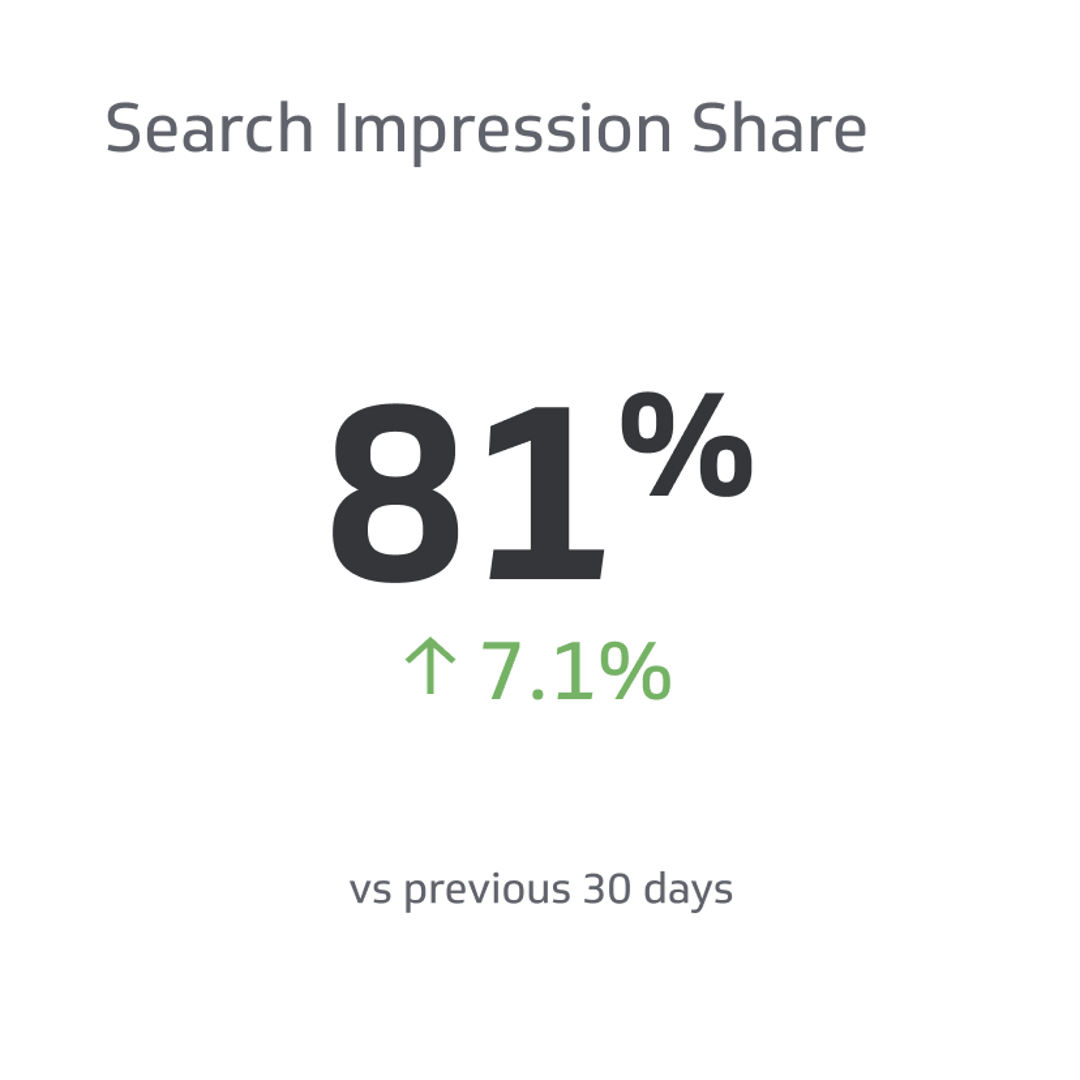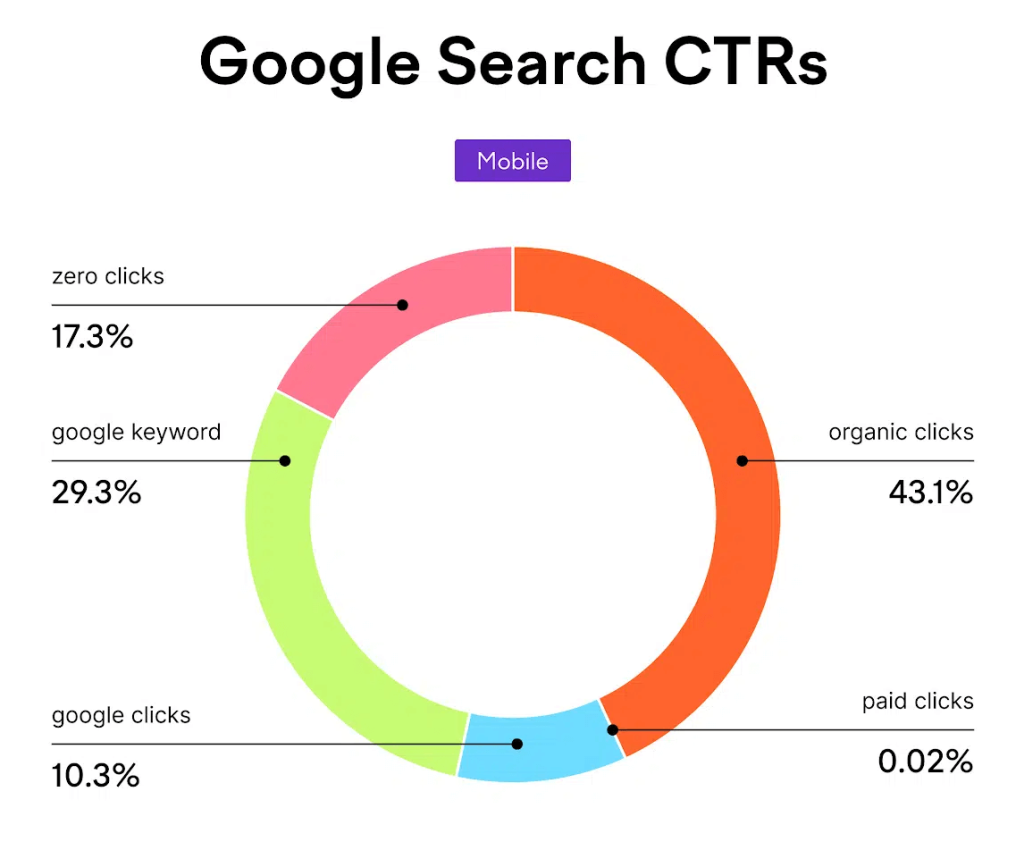81 percent of people who recognize a Google ad in a search result won’t click on it. They often prefer organic results.
Google ads can be beneficial for businesses, but many users tend to ignore them. This statistic reveals a significant challenge for marketers relying on paid search. Users often trust organic results more, perceiving them as more relevant and credible. To maximize reach, businesses should focus on improving their SEO strategies alongside their paid advertising efforts.
High-quality content, relevant keywords, and user-friendly website design can enhance organic search performance. Combining these tactics will help increase visibility and engagement, reaching a broader audience effectively. Balancing paid and organic strategies can lead to better overall search engine performance.
Statistical Breakdown
Understanding how users interact with Google Ads is crucial for marketers. A significant statistic reveals that 81% of people who recognize a Google Ad in a search do not click it. Let’s delve deeper into this figure and compare it with other relevant statistics.
The 81% Figure
This statistic means that out of every 100 users, 81 ignore Google Ads. This data is essential for advertisers planning their strategies.
- 81% of users avoid clicking on recognized Google Ads.
- Only 19% of users actually click on these ads.
These numbers highlight a significant challenge in digital advertising. Advertisers need to create more engaging and relevant ads to increase clicks.
Comparative Statistics
Let’s compare this 81% figure with other advertising metrics. This comparison provides a broader perspective on user behavior.
| Type of Ad | Percentage of Users Who Click |
|---|---|
| Facebook Ads | 22% |
| Instagram Ads | 20% |
| YouTube Ads | 15% |
From the table, we see that Facebook Ads have a higher click rate. This suggests that users might find ads on social media more engaging.
In conclusion, the 81% figure indicates a need for better-targeted ads. By understanding these statistics, marketers can improve their strategies to boost engagement.

Credit: www.klipfolio.com
Reasons For Non-clicks
Google Ads are everywhere. Yet, 81 percent of people avoid clicking them. Why do people ignore these ads? Let’s dive into the reasons for non-clicks.
Ad Fatigue
Many users see too many ads daily. This leads to ad fatigue. They get tired of seeing the same ads. Their brains start to ignore them. Even if the ad is new, it looks like the old ones.
Ad fatigue happens because ads are everywhere. They pop up in search results, social media, and websites. People get used to ignoring them. Their eyes skip over ads automatically.
Trust Issues
Many people don’t trust ads. They think ads are misleading. They worry about scams and false promises. This is why they avoid clicking ads.
Trust issues also arise from past bad experiences. If someone clicked on a bad ad before, they won’t trust ads again. They prefer organic results. They think these results are more reliable.
User Intent
User intent plays a big role. Sometimes, users search for information. They don’t want to buy anything. Clicking an ad doesn’t help them.
Other times, users are in a hurry. They want quick answers. Ads seem like a distraction. They avoid them to save time.
Some users have a goal in mind. They know what they want. They skip ads to find the best match.
| Reason | Description |
|---|---|
| Ad fatigue | Users see too many ads and start ignoring them. |
| Trust issues | Many users don’t trust ads due to past bad experiences. |
| User intent | Users often search for information, not products. |
Impact On Advertisers
Google Ads are a common tool for advertisers. Yet, 81 percent of people who recognize these ads do not click on them. This statistic has significant implications for advertisers.
Cost Implications
Advertisers pay for each click on their ads. If most people don’t click, the cost per click can be high. Advertisers might spend a lot without seeing results.
Return On Investment
Return on investment (ROI) measures the gain from an investment. With fewer clicks, ROI can drop. Advertisers need to rethink their strategies to improve ROI.
| Aspect | Impact |
|---|---|
| Cost per click | Higher due to fewer clicks |
| ROI | Potentially lower |
- Optimize ad content to attract clicks.
- Target the right audience to improve engagement.
- Analyze and adjust campaigns regularly.
- Review the cost of each click.
- Calculate the ROI of your ads.
- Make data-driven decisions to improve performance.
User Behavior Patterns
Understanding user behavior patterns is crucial for digital marketers. Knowing how users interact with search results helps tailor strategies effectively. This section delves into search habits and click-through tendencies.
Search Habits
Users often scan search results quickly. They prefer organic results over ads. The top organic results get the most clicks. Ads often get ignored despite their prominence.
Users trust organic results more. They believe these results are more relevant. Recognizing an ad influences their decision to click. They skip ads to find unbiased information.
| Search Result Type | Click Rate |
|---|---|
| Organic Results | 75% |
| Google Ads | 19% |
Click-through Tendencies
Click-through rates (CTR) vary significantly. Organic results have higher CTR. Users are more likely to click on what they perceive as unbiased.
- Top organic results receive the most clicks.
- Users tend to avoid ads, recognizing them as sponsored.
- Trust plays a significant role in their clicking behavior.
Understanding these click-through tendencies helps marketers optimize their strategies. Focusing on improving organic ranking is key. Ads need to be crafted carefully to gain user trust.
Alternative Ad Strategies
With 81 percent of people avoiding Google ads, alternative strategies are crucial. Businesses must explore different ways to reach their audience. Below are some effective alternatives.
Organic Search Results
Organic search results drive traffic without direct ad costs. Focus on search engine optimization (SEO) to improve your rankings. This involves using relevant keywords, creating quality content, and getting backlinks. SEO helps your website appear on the first page of search results. This increases visibility and attracts more visitors.
Content Marketing
Content marketing engages your audience through valuable information. Create blog posts, videos, infographics, and ebooks. Share content that solves problems or answers questions. This builds trust and authority in your niche. Regularly update your content to keep it fresh and relevant. Use calls to action to guide readers to your products or services.
Social Media Ads
Social media ads reach users on platforms like Facebook, Instagram, and Twitter. These ads can be highly targeted based on demographics, interests, and behaviors. Use eye-catching images and concise text to capture attention. Test different ad formats and messages to see what works best. Monitor performance and adjust your strategy as needed.
| Strategy | Benefit |
|---|---|
| Organic search results | Free traffic from search engines |
| Content marketing | Builds trust and authority |
| Social media ads | Highly targeted audience |
- Use SEO for better search rankings.
- Create valuable content to engage your audience.
- Leverage social media ads for precise targeting.

Credit: varn.co.uk
Case Studies
Many people recognize Google Ads but choose not to click them. Only 19% of people click Google Ads. We will explore some case studies in this section.
Successful Ad Campaigns
Some companies have seen great results with Google Ads. Here are a few examples:
| Company | Strategy | Results |
|---|---|---|
| ABC Corp | Targeted Keywords | 50% increase in sales |
| XYZ Inc | Local Ads | 30% more website traffic |
ABC Corp focused on specific keywords. This brought them a 50% increase in sales.
XYZ Inc used local ads effectively. They saw a 30% boost in website traffic.
Failed Ad Campaigns
Not all ad campaigns succeed. Here are some examples where things went wrong:
- Company A – Used broad keywords, resulted in low click-through rates.
- Company B – Poor ad copy, led to high bounce rates.
Company A made a mistake with broad keywords. Their click-through rates were very low.
Company B had poor ad copy. This caused high bounce rates.
Future Of Online Advertising
The future of online advertising is rapidly changing. With 81% of people recognizing a Google ad in a search but choosing not to click it, advertisers must rethink their strategies. This evolving landscape presents both challenges and opportunities.
Evolving User Preferences
Users today are more discerning. They seek authentic and relevant content. Ads that feel intrusive are often ignored. Instead, users favor organic search results over paid ads. This shift means advertisers must focus on creating engaging content.
- Focus on user intent.
- Provide value with each interaction.
- Use storytelling to capture interest.
Personalization is key. Users prefer ads tailored to their interests. Understanding and segmenting your audience can improve ad effectiveness.
Technological Advancements
Tech advancements are transforming online advertising. AI and machine learning play crucial roles. These technologies help in predicting user behavior and optimizing ad placements.
| Technology | Benefit |
|---|---|
| AI | Predicts user behavior |
| Machine Learning | Optimizes ad placements |
Programmatic advertising is another trend. It automates the buying of ads, making the process more efficient. Voice search is growing. Advertisers must adapt their strategies to include voice search optimization.
Interactive ads are gaining traction. These ads engage users and can lead to higher click-through rates. Examples include:
- Quizzes
- Surveys
- Interactive videos
Blockchain technology offers transparency in ad transactions. It ensures authenticity and reduces fraud.

Credit: varn.co.uk
Frequently Asked Questions
What Percentage Of Searches Click On Google Ads?
Approximately 3-4% of searches click on Google Ads. This percentage varies by industry and search intent.
How Many People Ignore Google Ads?
Around 70-80% of people ignore Google Ads, focusing instead on organic search results. This makes SEO crucial.
Do People Click On Google Ads?
Yes, people click on Google Ads. These ads can effectively attract targeted traffic and potential customers to websites.
What Is The Average Click-through Rate For Google Search Ads?
The average click-through rate for Google search ads is around 3-5%. This can vary by industry and ad quality.
Conclusion
Understanding user behavior towards Google Ads is crucial for effective digital marketing strategies. Most users recognize ads but don’t click them. This highlights the need for more engaging and relevant ad content. Focusing on organic search optimization can also drive better results.
Tailoring your approach can significantly improve click-through rates and overall campaign success.

